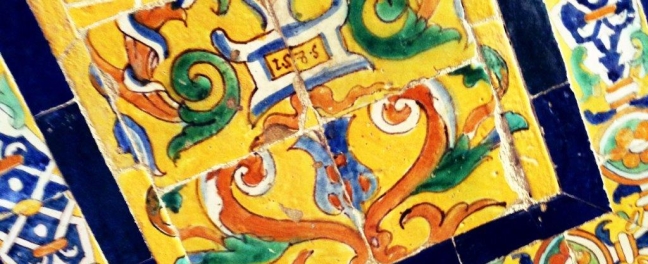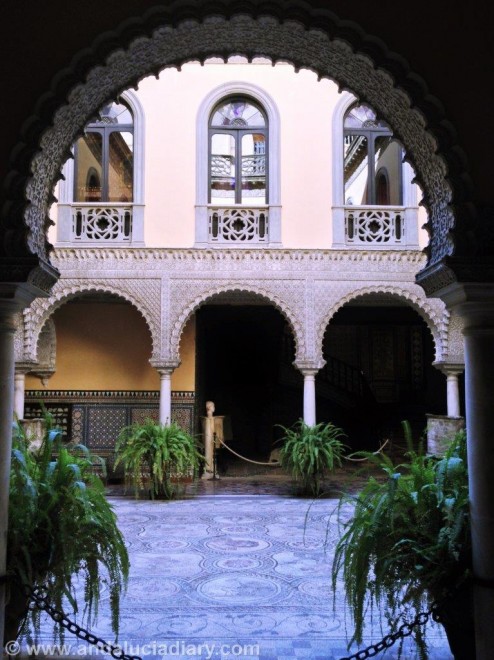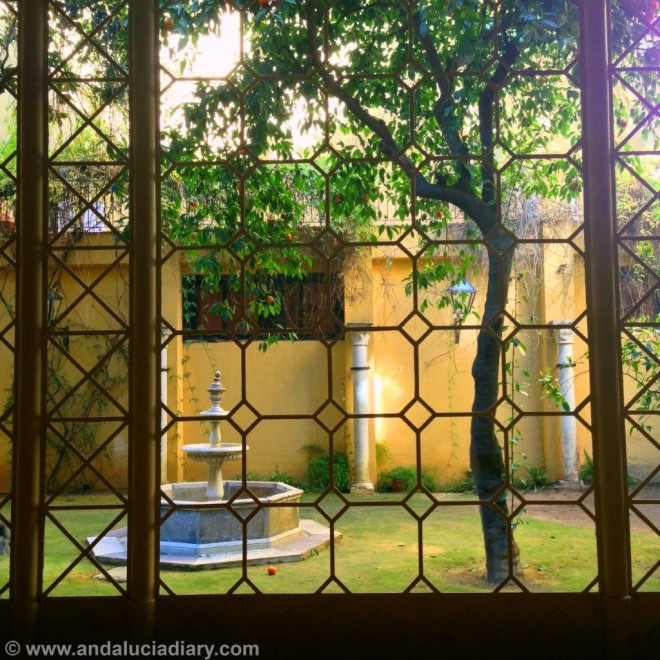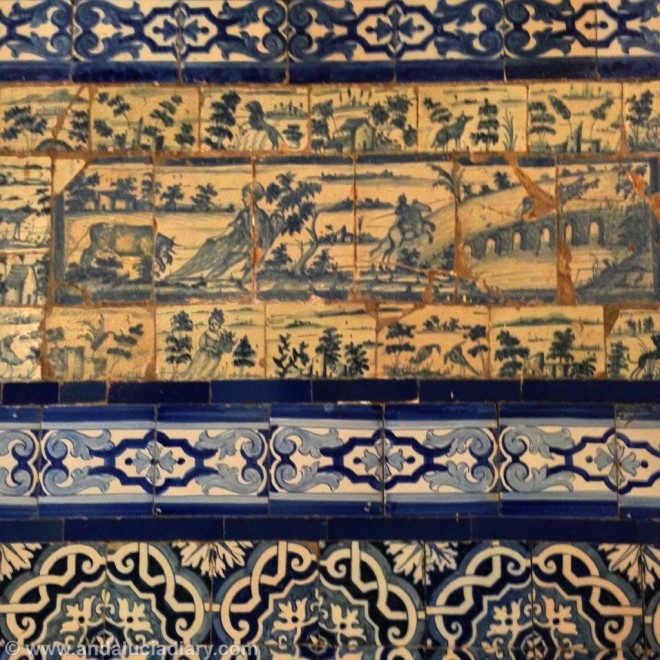Seville has a distinctive, historic grandeur, with over a thousand years of impressive architectural styles from Moorish palaces, medieval convents, renaissance churches, and contemporary landmarks. Yet some of the most extravagant mansions remain hidden, tucked away behind large, fortified wooden doors.
So whilst in Seville I took the opportunity to visit one of these aristocratic urban manor houses – the extraordinary ‘Palacio de la Condesa de Lebrija’, set back from the busy commercial pedestrianised street, Calle Cuno.
The first thing that strikes you about this sixteenth century mansion is the ground floor. Once you walk through the dimly lit entrance, the Al Andalus archway ahead gives way to a large, open air central patio, in extravagant Andalusian style. Yet it is not paved in typical terracotta but with a vast, intricate Roman mosaic.
At the beginning of the twentieth century, Regla Manjón Mergelina, the Countess of Lebrija called this prestigious address home and she made it a stunning showcase for her archaeological and fine art collections. She was a colourful and talented character that just couldn’t stop collecting. Of course, nowadays the notion of taking up a mosaic from a historic site and installing it in your home seems unthinkable, but in the 18th and 19th centuries, when many locals were looting and or using ancient remnants from the nearby Roman ruins of Italica for construction, it was acceptable for dealers and private collectors to acquire these astonishing artefacts and display them in their homes.
The Palace of the Countess Lebrija has an exceptional collection of these mosaics across its ground floor, including one decorating a full-sized Roman salon, which I can imagine hosted some amazing Seville society parties in its time.
Around the rooms are small wooden cabinets, fairly unassuming pieces of furniture, yet they protect extraordinarily rare artefacts from Latin America, Roman Spain and beyond. In fact the Countess was very well travelled and she would collect items on her trips.
In a room to the right is a painting of the Countess, dressed up for the Sanluca ‘Carnaval’; from this portrait it is clear she had an extrovert personality and she embraced all the benefits that her advantaged lifestyle offered. Yet she was more than simply a privileged aristocrat that bought without discernment; she was highly educated in history and the fine arts and was a member of the Royal Academy of Fine Arts in Madrid.
In another room are her private note books, works of art in themselves, featuring immaculate hand written notes accompanied by artistic renderings and drawings showing her ideas for cataloguing and displaying her on-going collection.
The rooms, including a Moroccan themed tea salon, a private chapel, large library and drawing rooms are more traditionally decorated, and the ornate rugs and soft furnishing make these grand spaces feel more cosy and welcoming. Every available space in cabinets, on the walls and even the ceilings, is covered or filled with collectables.
It’s a little surprising that with such treasures of national importance, they are not protected in the galleries of a museum. Yet for me the greatest appeal of visiting this remarkable private home was to experience the diversity and eccentricity of the collection, intact, and still displayed in the house of the person who brought each piece together with such knowledge and passion.
Genoveva Fernandez Gonzalez, is the Director of the Palace and together with her enthusiastic guides, offers an intriguing insight into the life of this wonderful mansion, its owner and the collection.
As well as offering guided tours, the property is available for private events and gala dinners.
































I have a friend who lived right in front of the palace for a year on Calle Cuna, but it was recently reopened to the public. Have wanted to go since!
Hi Cat. Sorry we missed you in Seville. It was busy few days. The Palace is well worth a visit: quirky like an old English Country house with SO much stuff collected from across the continents. Just wish the Roman mosaics could be better preserved.
Great photos..Did most of the Roman stuff come from Itàlica, the Roman town outside of Sevilla?
Thanks Paddy. I just travel with my iPhone – I find its much more discreet that my Canon DSLR and captures enough of the essence of a place. Yes, they kind of really ‘cleaned out’ Italica! The justification is that at the time locals were looting and also using tile fragments and other materials for construction so the integrity of artefacts were being lost – so better for the aristicracy to come in and buy them 🙂
Hi Paddy. Yes, pretty much all of it was lifted from Italica – supposedly saving it from looters… make me think f the Brits and the Elgin Marbles!